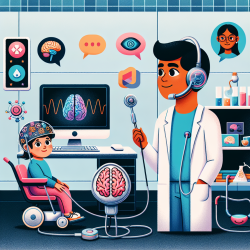Unlocking New Possibilities for Children: Brain-Computer Interfaces in Pediatric Care
Brain-Computer Interfaces (BCIs) are emerging as a transformative tool for children with severe disabilities. The recent article, "Advancing Brain-Computer Interface Applications for Severely Disabled Children Through a Multidisciplinary National Network," highlights the potential of BCIs to improve communication and interaction for children who face significant physical and neurological challenges.
Understanding BCIs and Their Impact
BCIs are systems that allow direct communication between the brain and external devices, providing a new pathway for interaction for those with limited physical capabilities. For children with conditions such as cerebral palsy or severe neuromuscular disorders, BCIs can offer a means to communicate and engage with their environment in ways previously thought impossible.
Key Findings from the Pediatric BCI Canada Meeting
The inaugural Pediatric BCI Canada meeting brought together experts, families, and stakeholders to discuss the current state and future directions of pediatric BCI research. Key takeaways include:
- BCIs have shown promise in enabling children to perform tasks with proficiency similar to adults.
- Collaborative networks like BCI-CAN are essential for advancing pediatric BCI development and implementation.
- Innovations in BCI technology can significantly enhance the quality of life for children with severe disabilities.
Implementing BCI Research in Practice
For practitioners, integrating BCI technology into therapeutic practices can be a game-changer. Here are some steps to consider:
- Stay Informed: Keep up with the latest research and technological advancements in BCI to understand how they can be applied in your practice.
- Collaborate: Engage with multidisciplinary teams, including engineers, neuroscientists, and therapists, to explore BCI applications tailored to individual patient needs.
- Patient-Centered Approach: Work closely with patients and their families to set realistic goals and ensure the BCI technology aligns with their needs and preferences.
Encouraging Further Research
The field of pediatric BCI is still in its infancy, and there is a significant opportunity for further research. Practitioners are encouraged to contribute to this growing body of knowledge by participating in studies, sharing insights, and advocating for increased funding and resources.
To read the original research paper, please follow this link: Advancing Brain-Computer Interface Applications for Severely Disabled Children Through a Multidisciplinary National Network: Summary of the Inaugural Pediatric BCI Canada Meeting.










